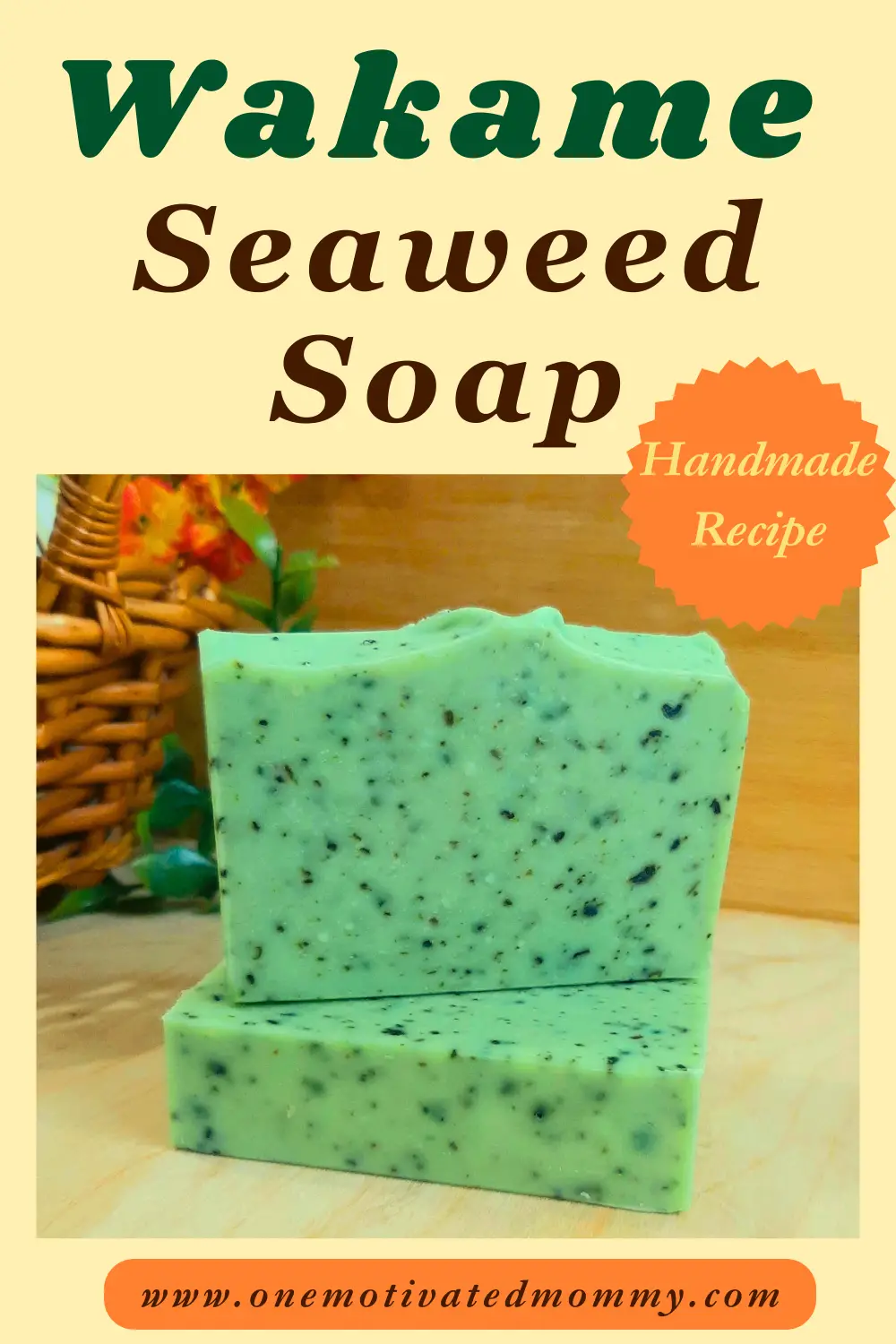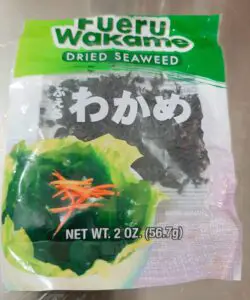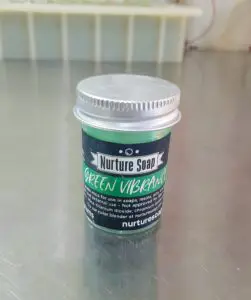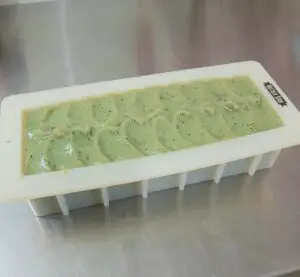Wakame seaweed (Undaria pinnatifida) is a type of kelp found in the Pacific Ocean used in Asian food and Oriental medicine. It features an abundance of nutrients like omega-3, vitamins, minerals, and amino acids, making it a favoured ingredient in many recipes, including miso soup, seaweed salad, and sushi. Among its vast components are essential minerals like magnesium, calcium, zinc, and potassium.
This seaweed is gaining widespread recognition for its many nutritional benefits from promoting weight loss to suppressing the growth of cancer cells.
Wakame contains an antioxidant called fucoxanthin that, when used externally, has been shown to have skin-protective, antibacterial, antioxidant, and anti-inflammatory properties. Additionally, it is rich in polysaccharides which provide humectant properties enabling it to absorb and retain moisture.
It is also used in anti-aging creams for its ability to stimulate collagen production and reduce the appearance of fine lines and wrinkles.
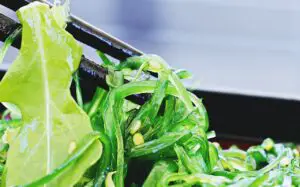
This recipe features a cold process wakame seaweed soap infused with the goodness of bentonite clay and coconut milk. The clay adds detoxifying properties and silkiness to the soap while the coconut milk promotes hydration and enhances the lather.
With wakame as a vital ingredient, this soap has exfoliating qualities to gently remove dead skin cells and surface impurities.
The anti-inflammatory nature of the seaweed may help to soothe irritated skin in conditions such as eczema, psoriasis and acne helping to reduce swelling and redness.
If you are interested in other soaps made with seaweed, you can also check my Seamoss and Coconut Soap recipe.
Making Wakame Seaweed Handmade Soap
This is the Wakame that I usually use in my soaps.
Ingredients to Make Wakame Seaweed Soap
- 14 oz Coconut oil
- 12 oz Olive oil
- 2 oz Castor oil
- 2 oz Shea butter
- 2 oz Cocoa butter
- 4.73oz Sodium hydroxide
- 12.16 oz Distilled water
- 1 oz essential oil (1/2 oz Eucalyptus and 1/2 oz Lemongrass)
- 0.35 oz Dried Wakame Seaweed
- 0.3 oz Coconut milk powder
- 0.5 oz Bentonite clay
- 1/2 tsp Green colourant
The colourant I used in this soap is Green Vibrance from Nurture Soap.
Feel free to use any pigment or mica you desire to obtain a lighter or more vibrant colour.
Instructions
Gather all your tools and ingredients.
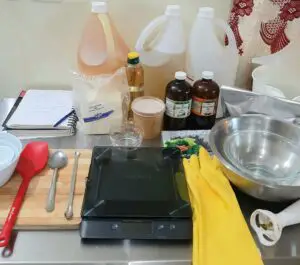
Safety First! Ensure that you are wearing long-sleeved clothing, safety goggles and gloves. Make sure there are no children or pets in the soapmaking area.
In a stainless steel or heat-safe bowl, weigh the water.
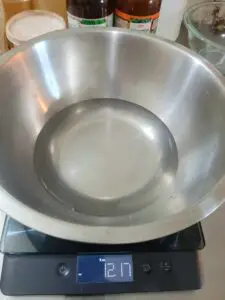
In a separate dry container, weigh the sodium hydroxide.
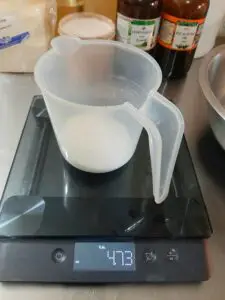
In a well-ventilated area, add the sodium hydroxide to the water and stir it with a stainless steel spoon until it is dissolved. Be cautious of fumes, and avoid breathing them in. Set the solution aside in a safe area.

Next, weigh the wakame seaweed.
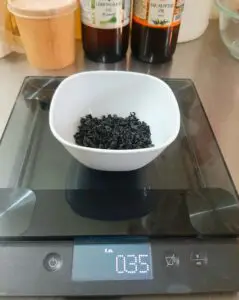
If you have a coffee grinder or a Magic Bullet, grind the seaweed as fine as possible. It does not have to be perfectly ground.
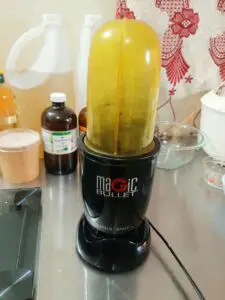
Weigh the coconut milk powder and bentonite clay in separate containers.
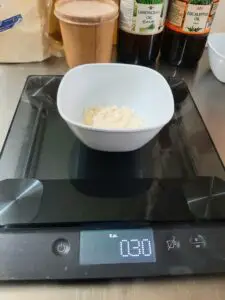
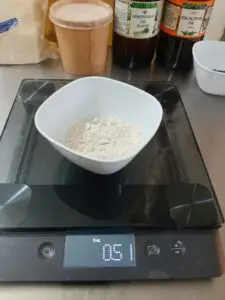
Prepare the essential oil. You may use any essential or fragrance oil you prefer. For this particular soap, I usually do a 50/50 blend of eucalyptus and lemongrass essential oils.
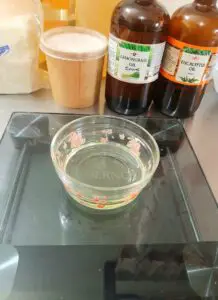
Weigh the cocoa and shea butter in a microwaveable or heat-proof container.
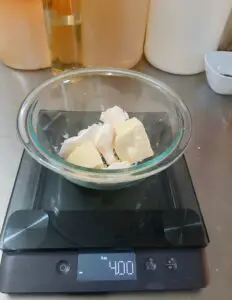
Melt the butters in the microwave or in a double boiler.

Weigh the oils and add them to the mixing bowl.
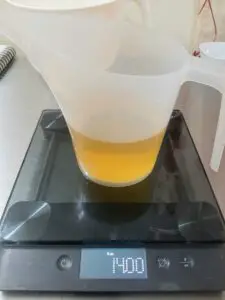
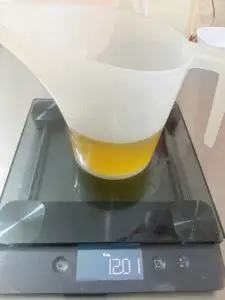
Once the butters are melted, add them to the mixing bowl with the oils.
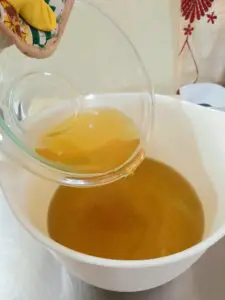
Once everything is prepared, clear away unnecessary tools and ingredients and get ready to make your wakame seaweed soap.
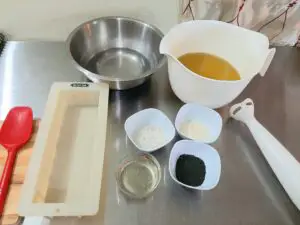
Add the bentonite clay, coconut milk and ground wakame seaweed to the mixing bowl.

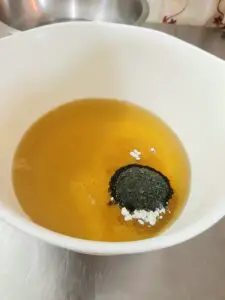
I placed all the powders in the same spot, with the wakame on top, to ensure smooth blending with the immersion blender and prevent any powders from being flung.
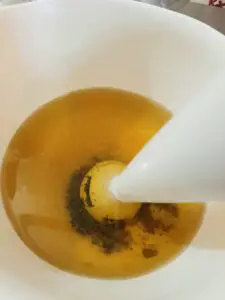
Blend with the immersion blender to mix all the powders into the oil
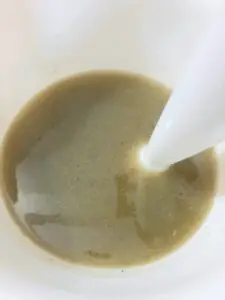
Carefully add the lye solution to the mixing bowl.
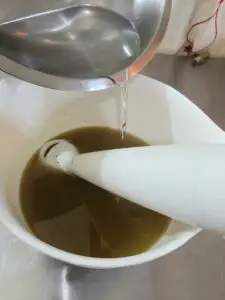
Mix until emulsified with low-speed blending and stirring. Add your desired shade of green colourant and gently blend until mixed in, reaching a light trace.
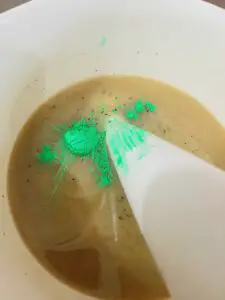
At trace add the essential oil and blend thoroughly.

Trace is reached when the soap leaves a raised trail or ‘trace’ when it is drizzled onto itself, as shown in the image below.
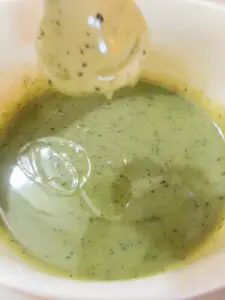
Next, pour the soap into the mould.
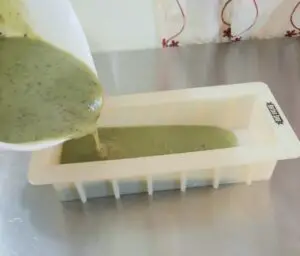
Texture the top as desired.
Allow the soap to solidify for 24 hours. After this time has passed, remove the soap from the mould and cut it into bars.
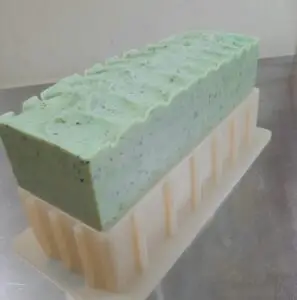
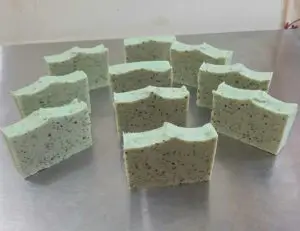
Place the bars in a well-ventilated area to cure for 4 to 6 weeks turning them occasionally to expose all sides to air during the cure period. Once cured, lather up and indulge in the nourishing experience of this wakame seaweed handmade soap.
